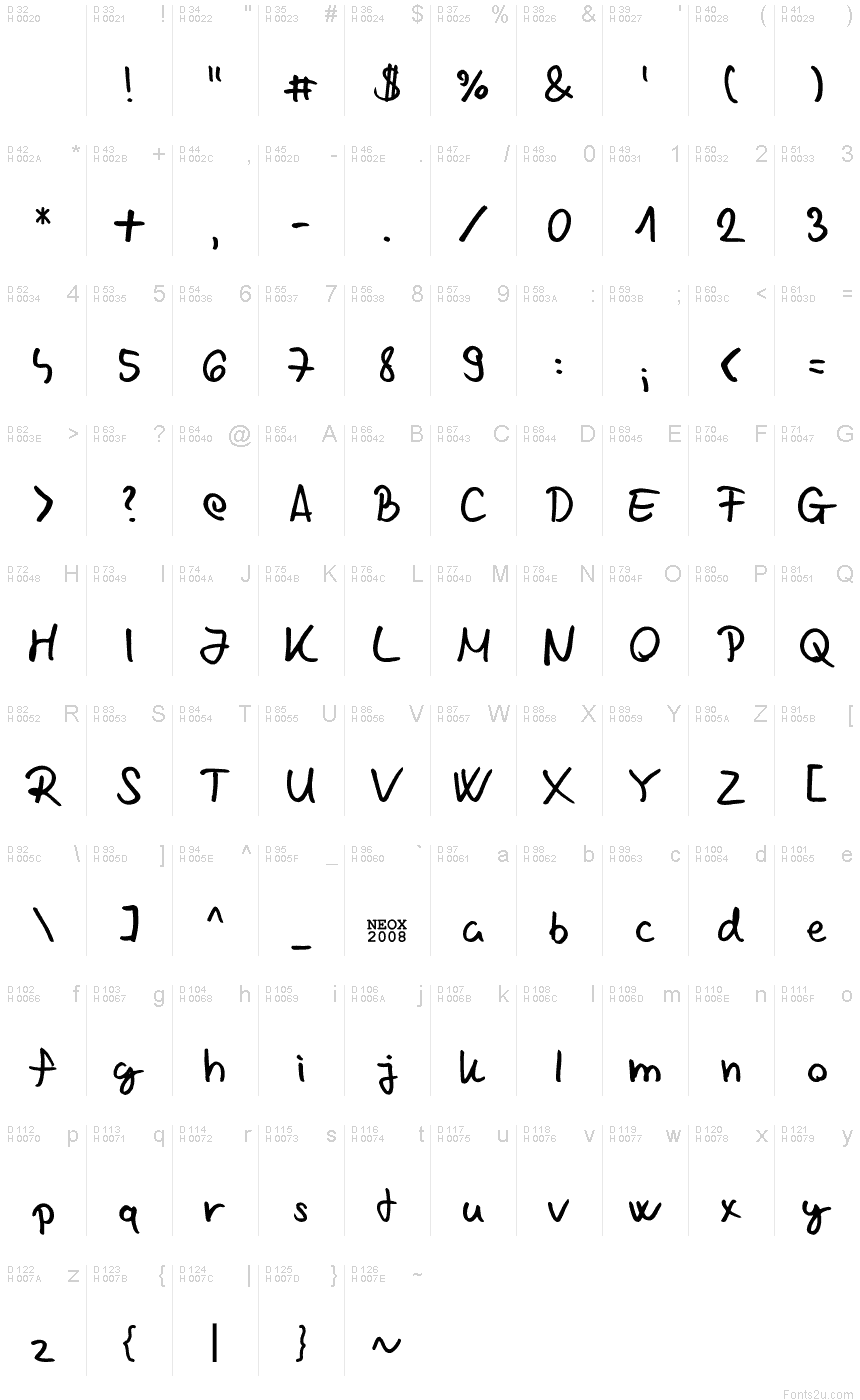Chabinho 2008 v2.0
TrueTypeUso pessoal
chabinho_2008_v2.ttf
Tags
Mapa de caracteres
Porfavor use o menu suspenso para ver os diferentes mapas de caracteres contidos nesta fonte.

Informaçőes de fontes básicas
Nota de direitos autorais
Typeface © The Monotype Corporation plc. Data © The Monotype Corporation plc/Type Solutions Inc. 1990-1992. All Rights Reserved
Família da fonte
Chabinho 2008 v2.0
Subfamília da fonte
Regular
Identificação única da subfamília
Chabinho 2008 v2.0:Version 3.00
Nome completo da fonte
Chabinho 2008 v2.0
Versão da tabela de nomes
Version 3.00 April 29, 2008
Nome da fonte do postscript
Chabinho2008v2.0
Nota da marca registrada
Times New Roman® Trademark of The Monotype Corporation plc registered in the US Pat & TM Off. and elsewhere.
Nome do fabricante
Designer
Descriçăo
This remarkable typeface first appeared in 1932 in The Times of London newspaper, for which it was designed. It has subsequently become one of the worlds most successful type creations. The original drawings were made under Stanley Morison's direction by Victor Lardent at The Times. It then went through an extensive iterative process involving further work in Monotype's Type Drawing Office. Based on experiments Morison had conducted using Perpetua and Plantin, it has many old style characteristics but was adapted to give excellent legibility coupled with good economy. Widely used in books and magazines, for reports, office documents and also for display and advertising.
Informações da fonte estendida
Plataformas suportadas
PlataformaCodificaçăo
MicrosoftUnicode BMP só
MacintoshRomano
UnicodeUnicode 2.0 e semântica em diante, Unicode BMP só.
Detalhes da fonte
Criado2008-04-29
Revisăo3
Contagem de glifos129
Unidades por Em2048
Direitos de IncorporaçăoIncorporação para instalação permanente
Classe da famíliaSerifas de forma livre
PesoMédio-leve
AmplitudeMédio (normal)
tipo de larguraNormal
Estilo para MacNegrito
EndereçoApenas glifos fortemente da esquerda para a direita
Padrăo naturalRegular
PosturaVertical
Espessura do traçadoNormal
AfastamentoNăo monoespaçado